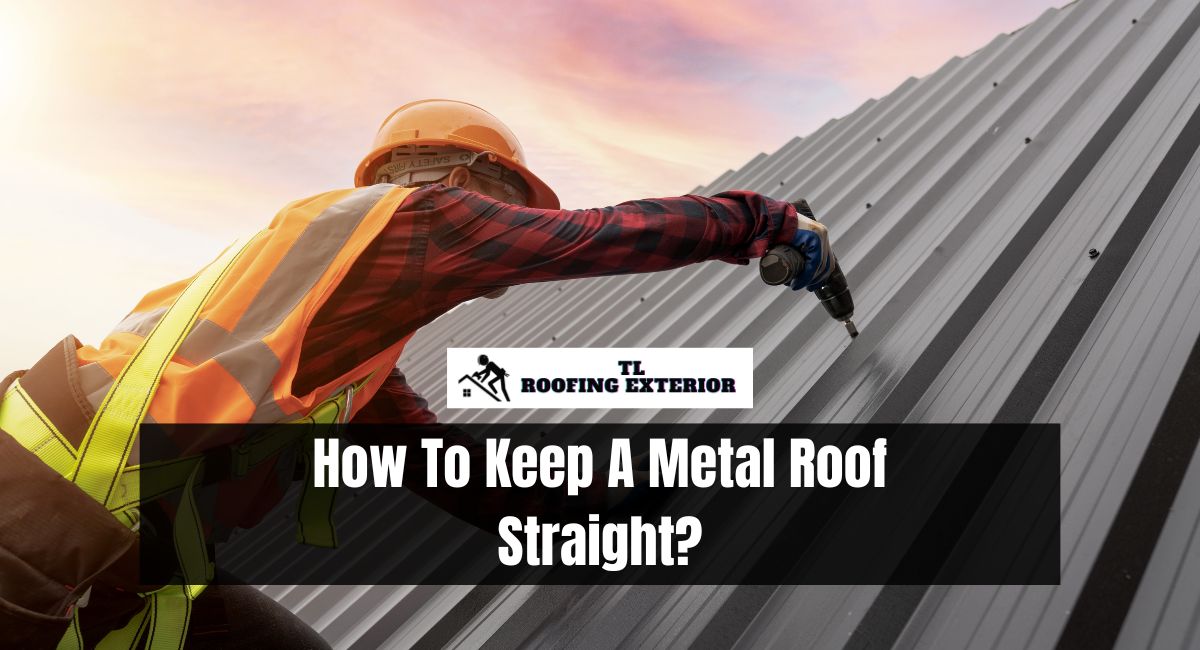Metal roofing is famous for its resilience, energy efficiency, and aesthetic appeal. However, it can be difficult to maintain the straightness of a metal roof, particularly in the face of environmental factors such as temperature fluctuations and wind forces.
A wavy or distorted roof not only detracts from the aesthetic allure of a building, but may also indicate underlying structural problems. So, how to keep a metal roofing straight?
This article examines the techniques and best practices for maintaining the straightness of a metal roof, from installation to ongoing maintenance.
How To Keep A Metal Roof Straight?
Keeping a metal roof straight and in good condition involves several key steps, starting from the installation phase and continuing through regular maintenance:
1. Proper Installation
The first step in ensuring a straight metal roof is to have it installed accurately. This includes alignment, attachment, and sealing. Always employ seasoned experts for installation.
2. Quality Materials
Utilize metal panels of superior quality that meet industry specifications for thickness, finish, and durability. Less materials of inferior quality are more susceptible to warping and oil canning, which can cause the roof to appear irregular.
3. Correct Fastening
Over-tightening or misalignment of fasteners can result in warping or collapsing. Follow the manufacturer’s recommended techniques and patterns for fastening.
4. Thermal Expansion
As temperature changes, metal expands and contracts. Ensure that the installation permits this movement to avoid warping or collapsing.
5. Regular Inspections
Periodic inspections can help identify any issues, such as loose fasteners, rust, or other damage that could contribute to an uneven appearance, such as loose fasteners or rust. Address these concerns immediately.
6. Prevent Overloading
Keep the roof free of heavy debris, snow, or equipment that could cause sagging or warping.
7. Professional Maintenance
For any repairs or alterations, always seek the advice of a professional with knowledge of metal roofing systems.
8. Sealant and Coatings
Applying a high-quality sealant or coating can provide an additional layer of protection against elements that can cause warping or corrosion, which can affect the straightness of the roof.
9. Drainage
Ensure that the roof is equipped with appropriate drainage systems, such as gutters and downspouts, to prevent water accumulation. Standing water can add weight and tension to metal panels, potentially causing them to warp or sag.
10. Wind Bracing
In areas prone to high winds, additional bracing or specialized fasteners may be advised to maintain the roof’s integrity and straightness.
11. Manufacturer Guidelines
Always consult the manufacturer’s care and maintenance instructions. Different varieties of metal roofing materials may necessitate unique maintenance requirements to remain straight and in good condition.
12. Regular Cleaning
Keeping the roof free of debris, algae, and dirt not only extends its lifespan, but also makes it easier to identify problems that may contribute to warping and other deformities.
13. Climate Considerations
Various climates have varying effects on metal roofing. In coastal areas, for instance, you may need to take extra precautions against salt corrosion, which can weaken metal and impact its straightness.
14. Consult Experts for Repairs
Rather than attempting repairs yourself, consult a roofing professional if you notice any problems. Incorrect roof restorations can exacerbate existing issues and compromise the roof’s straightness.
15. Record-Keeping
Maintain an inventory of all inspections, repairs, and alterations. This can be extremely useful for warranty claims and providing information to roofing professionals in the event of a problem.
By adhering to these best practices, you can significantly increase the likelihood of maintaining a straight and well-functioning metal roof for years to come.
How Do You Reduce Heat On A Metal Roof?
Several techniques exist for lowering the temperature of a metal roof. Consider applying a reflective coating or using a light-colored paint to reflect more sunlight. Adding a radiant barrier beneath the metal can also aid in reflecting heat away from the structure.
Proper ventilation is essential; soffit and ridge vents can aid in the exit of hot air. Additionally, some people choose “cool metal roofing,” which is designed to reflect more UV radiation. Installing a layer of insulation beneath the metal can reduce heat transfer even further.
Conclusion
Maintaining the straightness of a metal roof requires a combination of proper installation techniques, quality materials, and routine maintenance. Utilizing the proper metal gauge, ensuring precise alignment during installation, and performing periodic checks for indications of distortion all contribute to the roof’s overall straightness.
Minor waviness is a natural characteristic of metal roofing, but significant distortions should be addressed immediately to prevent structural problems.
By adhering to the guidelines and suggestions indicated in this article, you can preserve the structural integrity and aesthetic appeal of your metal roof for decades.
Read More: What Is The Best House Siding Material?
